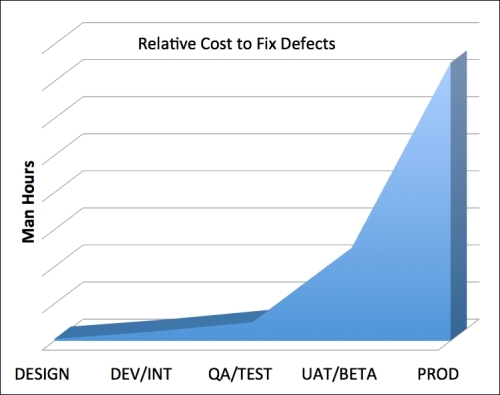For software organizations, defects can be extremely costly. For each defect identified, the amount of time spent by engineering, quality assurance, and related teams to rectify it is equivalent to the amount of time and resources that are distracted from feature development and strategic business initiatives. It is, by nature, a one to one ratio. Identifying and addressing defects earlier in the software development lifecycle by through the use of build pipelines can save multitudes of time, resources and solidify business credibility.
Over the years, there have been a number of independent research studies conducted to better quantify the relative costs associated with software development efforts including bug fixing, software architecture, project management, and so on. The most notable research into defect analysis, specifically, was conducted by Barry Boehm in 2007 and is illustrated in Figure 7-1.

Figure 7-1: Relative cost of bug fixes
His research...



